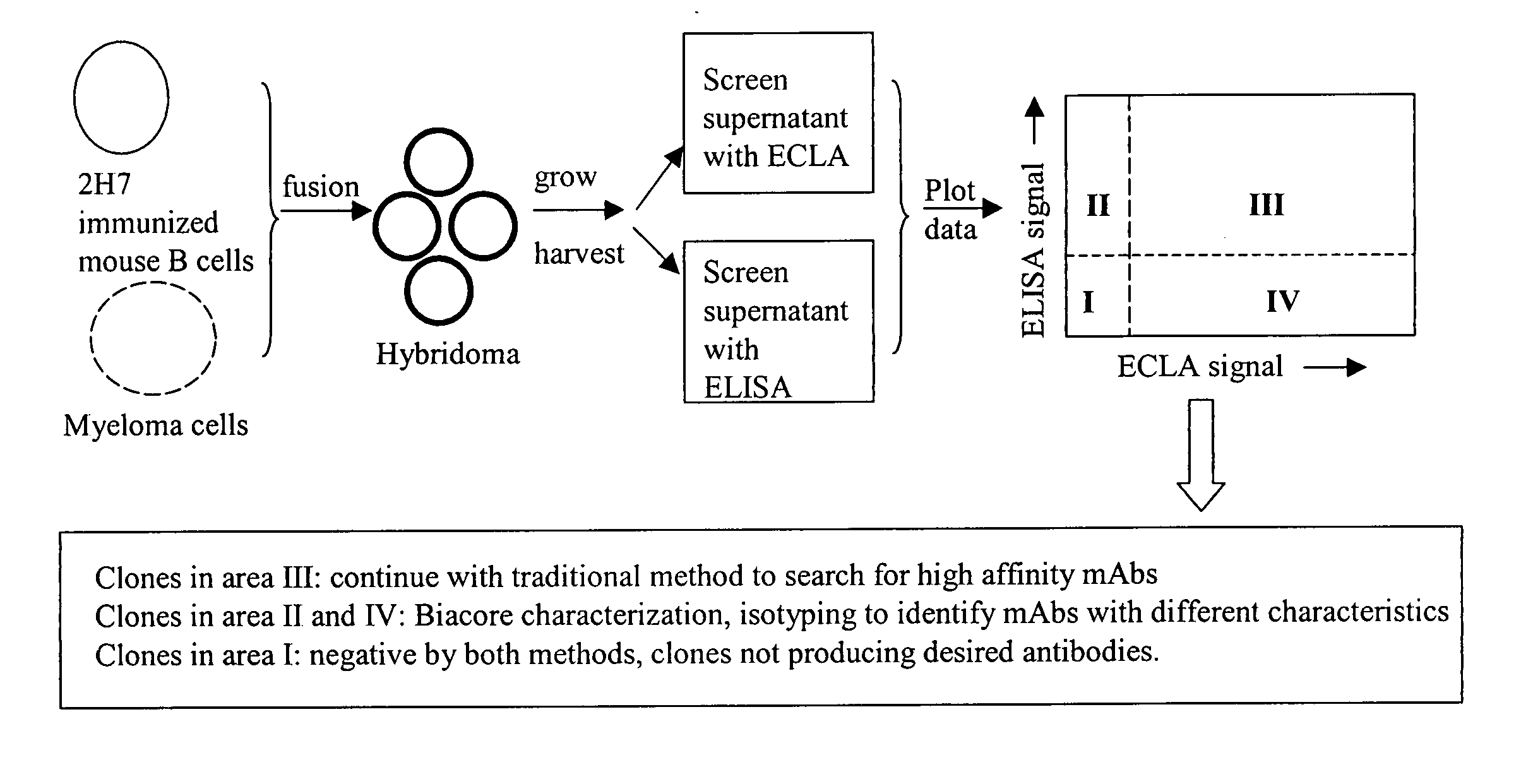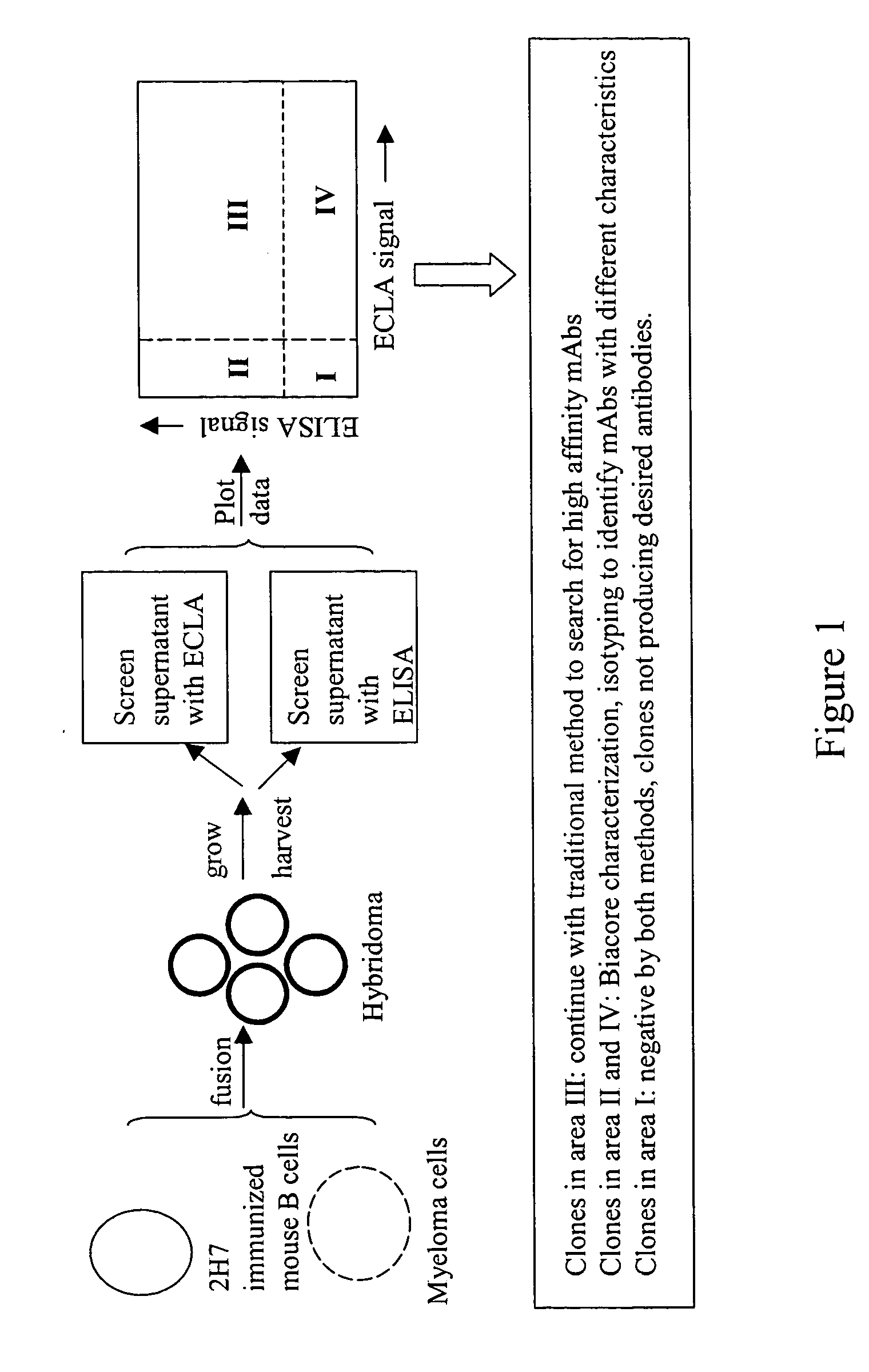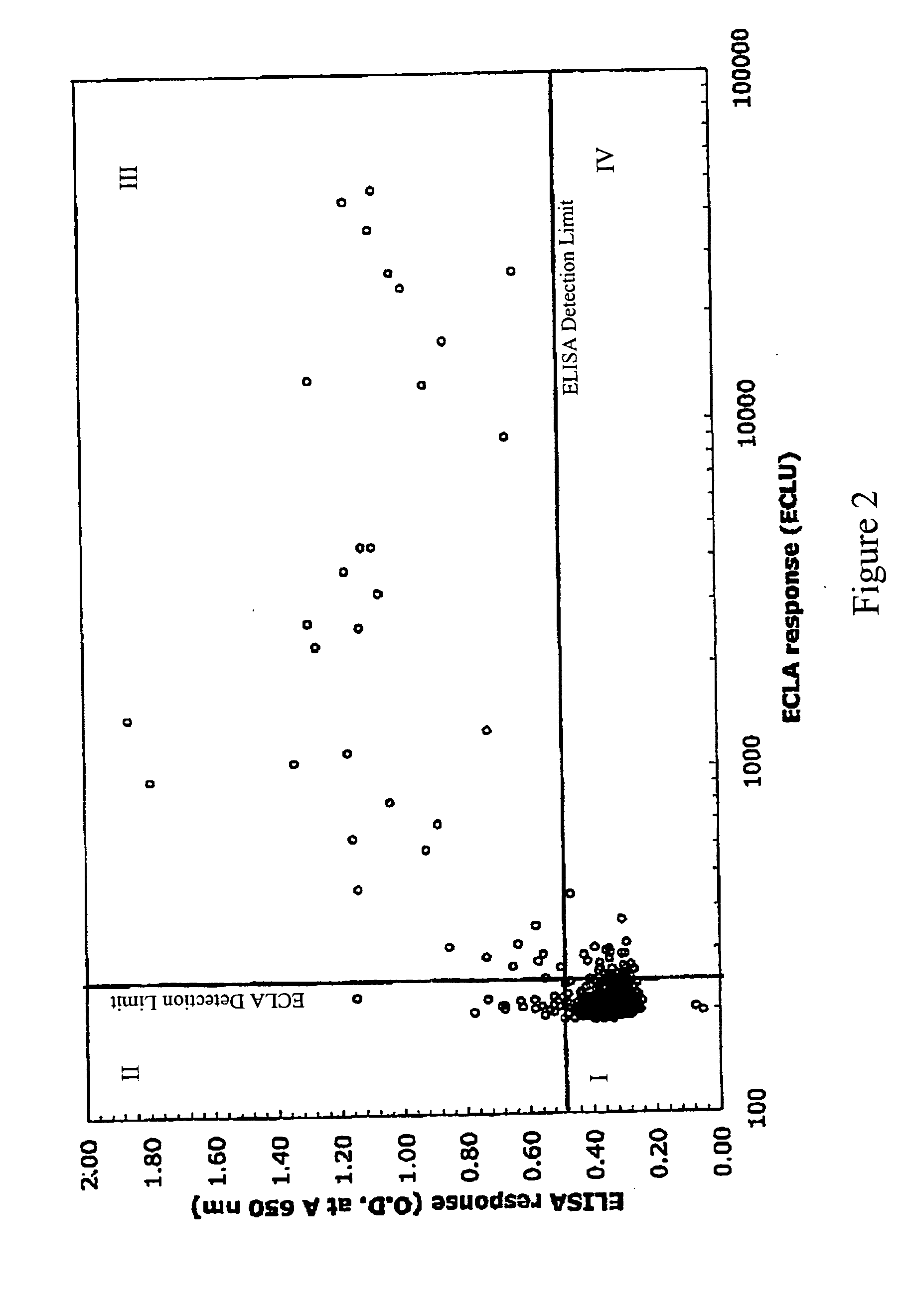Cross-screening system and methods for detecting a molecule having binding affinity for a target molecule
a technology of target molecule and cross-screening system, which is applied in the field of cross-screening system and methods for detecting a molecule having binding affinity for a target molecule, can solve the problems of reducing the sensitivity of the assay, unable to readily identify antibodies that bind with low affinity, and not being as effective in screening low affinity antibodies.
- Summary
- Abstract
- Description
- Claims
- Application Information
AI Technical Summary
Benefits of technology
Problems solved by technology
Method used
Image
Examples
example 1
Screening Hybridomas for Low Affinity Anti-2H7 Antibodies.
[0116] Hybridoma supernatants were screened for production of low affinity anti-2H7 antibodies using cross-screening methods employing ELISA and ECLA. A workflow diagram of an embodiment of a hybridoma screening strategy is shown in FIG. 1.
Hybridoma Production
[0117] BALB / c mice were immunized and boosted 10 times with 0.5 μg 2H7 resuspended in monophosphoryl lipid A / trehalose dicorynomycolate adjuvant (Corixa). The suspension was injected in each hind footpad at 3 to 4 days intervals. Three days after final boost, poptileal lymph nodes were fused with cells of the myeloma cell line, P3X63Ag.U.1 (ATCC, Manassas, Va.). Fused cells were selected by hypoxanthin-aminopterin-thymidine (HAT) medium selection.
ECLA Screening
[0118] Supernatants from hybridoma cultures were screened for low affinity anti-2H7 antibodies by plotting ECLA responses versus ELISA responses. ECLA was performed as described in Baker et al., 2002, Trends...
example 2
[0127] Biacore Analysis of Low Affinity Anti-2H7 Antibodies
[0128] A number of hybridoma clones producing antibodies in quadrants I, II, III, or IV in Example 1 were selected for further characterization and confirmation of specific binding affinity. Dissociation rate constants (Kdissoc) for antibodies produced by the selected hybridoma clones were determined by Biacore analysis.
[0129] The analysis was performed on a Biacore 3000 (USA Biacore, Inc., Piscataway, N.J.). The monoclonal antibody 2H7 was immobilized on a CM5 sensor chip in a flow cell. In brief, the flow cell was activated by injecting 35 μl of a solution containing equal volumes of 11.5 mg / ml of N-hydroxysuccinimide (NHS) and 7.5 mg / ml of 1-ethyl-3-(3-dimethylaminopropyl) carbodiimide hydrochloride (EDC). Following activation of the flow cell, 2H7 in sodium acetate (pH 5.0) was injected manually to reach a response of approximately 500 RU on the chip. Thirty-five μl of 1 M ethanolamine hydrocholoride-NaOH (pH 8.0) was ...
example 3
Isotyping of Low Affinity Anti-2H7 Antibodies
[0134] Isotypes were determined for antibodies produced by the hybridoma clones selected for further characterization in Example 2. An ELISA based antibody isotyping assay was performed Briefly, a polypropylene 96-well microtiter plate was coated with 50 μl of isotype specific goat anti-mouse Ig (Southern Biotech, Pittsburgh, Pa.) and incubated overnight at 4° C.
[0135] The plate was washed with wash buffer (PBS with 0.05% Tween-20) and blocked with 200 μl of 2% BSA in PBS for one hour at room temperature. The plates were washed with wash buffer three times and 100 μl of hybridoma culture supernatant was added to the wells. The plate was incubated for 30 minutes at room temperature and washed three times. Fifty μl of HRP goat anti-mouse IgG Fc specific (ICN) was added to each well and the plate was incubated for 30 minutes at room temperature. The plate was developed with HRP substrate as described for Example 1. Absorbance was measured ...
PUM
| Property | Measurement | Unit |
|---|---|---|
| Molar density | aaaaa | aaaaa |
| Molar density | aaaaa | aaaaa |
| Nanoscale particle size | aaaaa | aaaaa |
Abstract
Description
Claims
Application Information
 Login to View More
Login to View More - R&D
- Intellectual Property
- Life Sciences
- Materials
- Tech Scout
- Unparalleled Data Quality
- Higher Quality Content
- 60% Fewer Hallucinations
Browse by: Latest US Patents, China's latest patents, Technical Efficacy Thesaurus, Application Domain, Technology Topic, Popular Technical Reports.
© 2025 PatSnap. All rights reserved.Legal|Privacy policy|Modern Slavery Act Transparency Statement|Sitemap|About US| Contact US: help@patsnap.com



